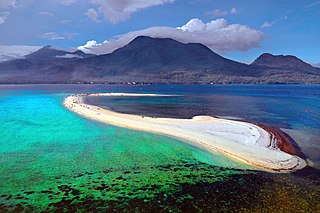
Camiguin, officially the Province of Camiguin, is an island province in the Philippines located in the Bohol Sea, about 10 kilometers (6.2 mi) off the northern coast of mainland Mindanao. It is geographically part of Region X, the Northern Mindanao Region of the country and formerly a part of Misamis Oriental province.

Lanao del Sur, officially the Province of Lanao del Sur, is a province in the Philippines located in the Bangsamoro Autonomous Region in Muslim Mindanao (BARMM). The capital is the city of Marawi, and it borders Lanao del Norte to the north, Bukidnon to the east, and Maguindanao del Norte and Cotabato to the south. To the southwest lies Illana Bay, an arm of the Moro Gulf.
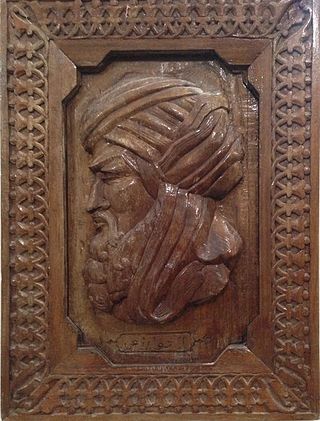
Muhammad ibn Musa al-Khwarizmi, or simply al-Khwarizmi, was a polymath who produced vastly influential Arabic-language works in mathematics, astronomy, and geography. Around 820 CE, he was appointed as the astronomer and head of the House of Wisdom in Baghdad, the contemporary capital city of the Abbasid Caliphate.

Marawi, officially the Islamic City of Marawi, is a 4th class component city and capital of the province of Lanao del Sur, Philippines. According to the 2020 census, it has a population of 207,010 people.

Al-Khwarizmi is a lunar impact crater located on the far side of the Moon. It lies to the southeast of the crater Moiseev, and northeast of Saenger.
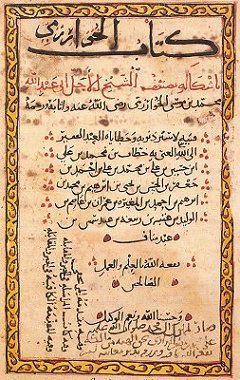
Al-Jabr, also known as The Compendious Book on Calculation by Completion and Balancing, is an Arabic mathematical treatise on algebra written in Baghdad around 820 by the Persian polymath Al-Khwarizmi. It was a landmark work in the history of mathematics, with its title being the ultimate etymology of the word "algebra" itself, later borrowed into Medieval Latin as algebrāica.

Mathematics during the Golden Age of Islam, especially during the 9th and 10th centuries, was built upon syntheses of Greek mathematics and Indian mathematics. Important developments of the period include extension of the place-value system to include decimal fractions, the systematised study of algebra and advances in geometry and trigonometry.
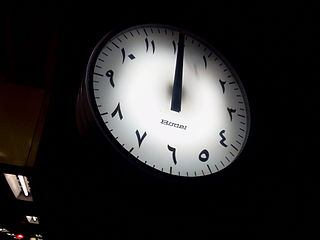
The Eastern Arabic numerals, also called Indo-Arabic numerals, are the symbols used to represent numerical digits in conjunction with the Arabic alphabet in the countries of the Mashriq, the Arabian Peninsula, and its variant in other countries that use the Persian numerals on the Iranian plateau and in Asia.
Al-Khwarizmi or Muḥammad ibn Mūsā al-Khwārizmī was a Persian scholar who produced works in mathematics, astronomy, and geography.
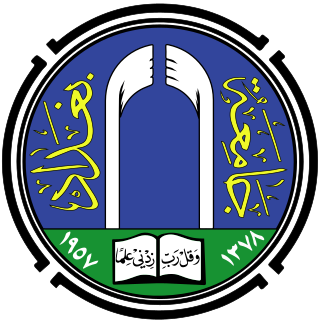
The University of Baghdad (UOB) is a public research university in Baghdad, Iraq. It is the largest university in Iraq and the tenth largest in the Arab world.

Louis Charles Karpinski was an American mathematician.
ʿAbd al-Hamīd ibn Turk, known also as ʿAbd al-Hamīd ibn Wase ibn Turk al-Jili was a ninth-century Muslim mathematician. Not much is known about his life. The two records of him, one by Ibn Nadim and the other by al-Qifti are not identical. Al-Qifi mentions his name as ʿAbd al-Hamīd ibn Wase ibn Turk al-Jili. Jili means from Gilan. On the other hand, Ibn Nadim mentions his nisbah as khuttali (ختلی), which is a region located north of the Oxus and west of Badakhshan. In one of the two remaining manuscripts of his al-jabr wa al-muqabila, the recording of his nisbah is closer to al-Jili. David Pingree / Encyclopaedia Iranica states that he originally hailed from Khuttal or Gilan. He wrote a work on algebra entitled Logical Necessities in Mixed Equations, which is very similar to al-Khwarzimi's Al-Jabr and was published at around the same time as, or even possibly earlier than, Al-Jabr. Only a chapter called "Logical Necessities in Mixed Equations", on the solution of quadratic equations, has survived. The manuscript gives exactly the same geometric demonstration as is found in Al-Jabr, and in one case the same example as found in Al-Jabr, and even goes beyond Al-Jabr by giving a geometric proof that if the discriminant is negative then the quadratic equation has no solution. The similarity between these two works has led some historians to conclude that algebra may have been well developed by the time of al-Khwarizmi and 'Abd al-Hamid.
Algebra can essentially be considered as doing computations similar to those of arithmetic but with non-numerical mathematical objects. However, until the 19th century, algebra consisted essentially of the theory of equations. For example, the fundamental theorem of algebra belongs to the theory of equations and is not, nowadays, considered as belonging to algebra.
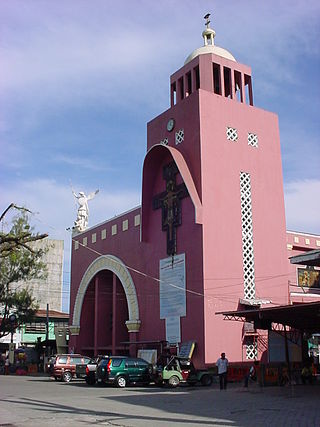
The Diocese of Iligan is a Latin Church ecclesiastical jurisdiction or diocese of the Catholic Church in the Philippines, comprising 26 parishes in Iligan City and twelve municipalities located at the northern half of the province of Lanao del Norte.
Cancajanag is located within the municipal boundary of Dagami in the province of Leyte, on the island of Leyte, Region VIII, of the Philippines. It is located within the baranggays of Bouglayor and San Agustin.
Pak-Turk Maarif International Schools & Colleges is a chain of private international educational institutes under the umbrella of Turkish Maarif Foundation. Established in 2018, for the promotion of literacy in Pakistan, Pak-Turk Maarif has 27 branches in Islamabad, Rawalpindi, Lahore, Karachi, Khairpur, Multan, Jamshoro, Peshawar, Hyderabad and Quetta, with a total student population of more than 13000. Before 2018, the school was called Pak-Turk International Schools and was not under the umbrella of the Turkish Maarif Foundation.
Notre Dame of Kiamba (NDK) is a private school in National Highway, Poblacion, Kiamba, Sarangani formerly run by Marist Brothers. NDK has been a member of the Notre Dame Educational Association, a group of Notre Dame Schools in the Philippines under the patronage of the Blessed Virgin Mary.

The Island of the Jewel or Island of Sapphires was a semi-legendary island in medieval Arabic cartography, said to lie in the Sea of Darkness near the equator, forming the eastern limit of the inhabited world.
Al-Khwarizmi Complex is a complex consisting of a garden and a symbolic mausoleum located on Al-Khwarizmi street, Urganch, Khorazm Region, Uzbekistan. By the decision of the Cabinet of Ministers of the Republic of Uzbekistan on October 4, 2019, the complex was included in the national list of real estate objects of tangible cultural heritage and received state protection. Currently, it is state property based on the right of operational management of the Department of Culture of Khorazm Region.










